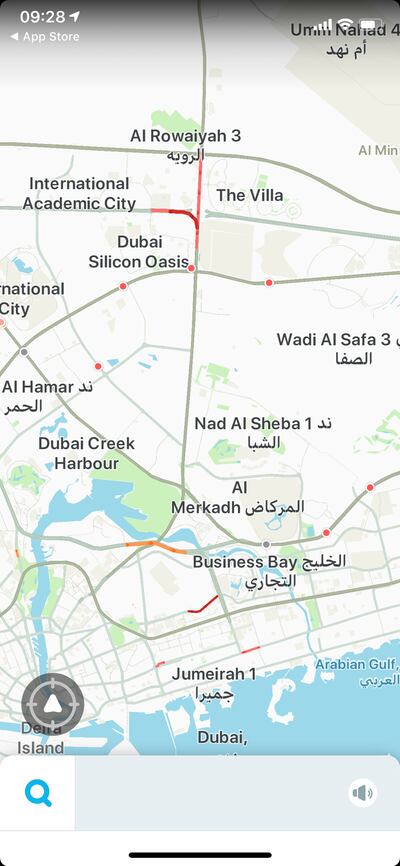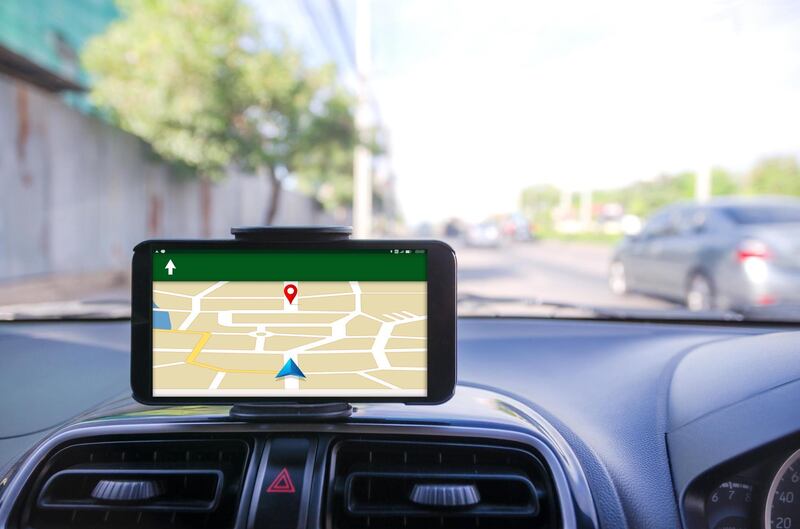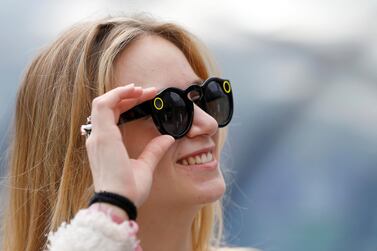It’s estimated that a billion drivers worldwide use navigation apps that detect build-ups of traffic and route motorists around it. They’re one of the wonders of the modern technological age, offering gridlocked drivers everywhere from Dubai to Dublin a glimmer of hope that they might beat the system. But in the past few years, reports have emerged across the world of previously peaceful neighbourhoods besieged by traffic, as apps suggest shortcut routes that were never meant to be busy thoroughfares.
Researchers at the University of California, Berkeley are now considering the possibility that the sheer number of people using “active routing” apps might be making urban driving more perilous and, ultimately, slower.
“Traffic management is a super-complex problem because there’s so much going on and things are pretty hard to predict,” says Jane Macfarlane, from the university’s Institute of Transportation Studies. “When a traffic event occurs, people behave in a chaotic way. But now we have navigation apps operating in the context of this chaotic system, and governments have to try and control it on some level with actual infrastructure.”
Macfarlane stresses that active routing isn’t bad – in fact, it’s necessary to manage congestion – but the apps performing the calculations fail to take all of society’s needs into account.
A must-have feature
In-car navigation systems brought power to the driver, with optimised routes based on roads’ capacity and convenience. But in about 2013, their real-time capabilities grew and active routing became a must-have feature. Waze was the first app to solicit crowdsourced data from its users, and it began redefining roadmaps across the world as secret shortcuts became common knowledge. Waze has acknowledged that its aim has been to “spread cars out across the grid and to alleviate traffic”, but Macfarlane doesn’t believe these aims are necessarily compatible. “Do we want to cover every bit of asphalt with cars?” she asks. “If you let these algorithms go to the extreme, that’s what it would do. It would just distribute everybody everywhere.”

The app-based management of traffic has been likened to water finding a route around a dam, but the route that's ultimately found isn't necessarily designed to carry it. Back in 2017, a former traffic co-ordinator for New York City made a candid admission to USA Today: "Waze hit transportation planners so fast that we didn't know what to do."
As these apps grew in popularity, a battle ensued between the managers of city infrastructure and the developers of the apps, including Google and Apple. These companies now had a product that people considered indispensable – not least because it put their needs first – and governments, who must look after the interests of all citizens, started implementing road closures and speed limits to curb its worst effects. That tussle is still going on.
“I have heard a rumour that one of the cities here in California just called up Waze and demanded that they take them out of their network, period,” says Macfarlane. “Their message was: ‘We don’t want your app routing traffic through our city.’” Our highly connected, data-rich world sees these kind of issues all the time. Our patterns of behaviour can be collated to make products that solve problems or provide value, but their scale of use has knock-on effects that were never foreseen by their developers. In fact, mathematicians have long known that information alone cannot solve traffic congestion, and navigation apps have proved them right.
Unintended consequences
“These apps weren’t made with malice,” Macfarlane says. “It seemed like the right thing to do, but there were unintended consequences that were only recognised later. Some of the firms are now starting to think about how to correct it, but it’s not a product problem. It’s a systems problem. The routing algorithms don’t have any notion of what the citizens want to happen, or what the government wants to happen, because we have no metrics to measure these things.”
With apps and governments pitted against each other, the Institute of Transportation Studies has called for traffic data to be pooled and for all parties to work together for the greater good. For its part, Waze has launched a data-exchange initiative called Connected Citizens, offering cities anonymised data in return for information about infrastructure, danger spots, road signs or road closures. More than 100 cities across the world now take part. But other app developers, most notably Google and Apple, aren’t willing to share their data with cities or, indeed, each other. As Macfarlane notes, each provider only receives data from the devices of its own users, clouding its “understanding of reality”.
With rising populations and growing traffic, the alleviation of city congestion will only become more difficult in the coming years. Some cities are implementing “multimodal” solutions, which technology can also help with. The Citymapper app, which collates vast amounts of data about the movement of people around cities, is in a prime position to offer public transport services that aren’t already being provided; in 2017 it launched its own bus service in London in collaboration with the city’s transport service, proving that it is possible for developers and cities to work in tandem. But a crucial step, says Macfarlane, is for navigation apps to prioritise the needs of the city over those of individuals. These apps have unintentionally created a gamified system where car journeys are optimised to beat everyone else to their respective destinations. Some drivers already have a selfish mindset, but these apps may be encouraging it. Education may be needed to make people aware that reducing our own journey time might not be best for everyone.
“I think a lot of people would be willing to take an extra three minutes if they thought, say, emissions in a particular neighbourhood were going to go up,” Macfarlane says. “I do have hope that people would make the right choice if they knew the consequences.”
The question is whether navigation apps will start to help us make these unselfish choices.






